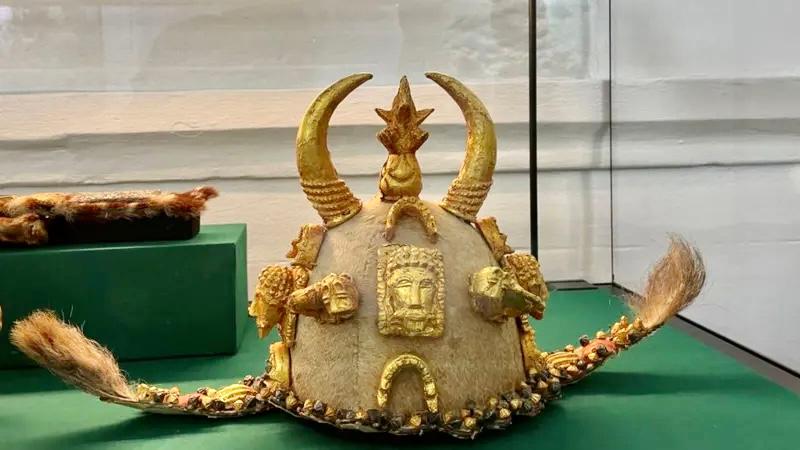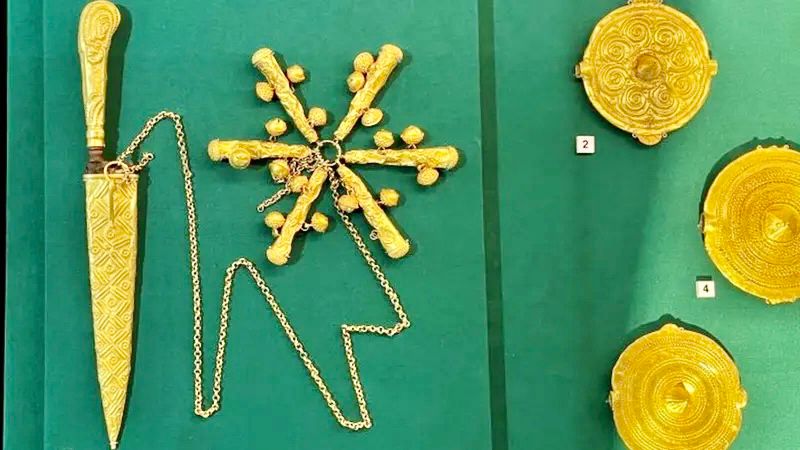After 150 years of separation, looted treasures from the illustrious Asante kingdom find their way back to Ghana, igniting jubilation and a profound sense of cultural restoration among Ghanaians. The Manhyia Palace Museum in Kumasi, the heart of the Asante region, becomes a beacon of celebration as crowds flock to witness the long-awaited homecoming of 32 precious artifacts.

In a poignant declaration, Asante King Otumfuo Osei Tutu II proclaims, This is a day for Asante. A day for the Black African continent. The spirit we share is back,” encapsulating the profound significance of the moment. Yet, amidst the euphoria, a somber reality emerges—the artifacts, while returned, are on loan to Ghana for a mere three years, with the potential for extension. This arrangement, brokered between the Victoria & Albert Museum (V&A) and British Museum with the Asante king, underscores the complexities of restitution and the absence of direct involvement by the Ghanaian government.
Henry Amankwaatia, a retired police commissioner and proud Asante, encapsulates the collective sentiment, proclaiming, “Our dignity is restored,” against a backdrop of jubilant drumming. The artifacts, including Ghana’s coveted ‘crown jewels,’ bear witness to a tumultuous history marked by the Anglo-Ashanti wars of the 19th century, notably the Sargrenti War of 1874. Some pieces, like the revered gold harp (Sankuo), were relinquished to a British diplomat as early as 1817, further underscoring the enduring scars of colonial exploitation.

Dr. Tristam Hunt, director of the Victoria and Albert Museum, acknowledges the painful legacy surrounding the acquisition of these artifacts, tainted by the specter of imperial conquest and colonial subjugation. Yet, amidst this acknowledgment lies a glimmer of hope—a testament to the power of cultural exchange and reconciliation as the artifacts return to their rightful home in Kumasi.
Among the returned treasures, the ‘mpompomsuo sword,’ or sword of state, holds profound significance, serving as a symbol of authority and heritage for the Asante people. Its return signifies not only the physical restitution of stolen artifacts but also the reclaiming of a portion of the Asante’s identity and legacy.

However, the return of these artifacts is not without controversy. Legal constraints within the UK prohibit national museums like the V&A and British Museum from permanently repatriating contested items, necessitating loan agreements as a compromise. While many Ghanaians advocate for permanent restitution, this interim arrangement serves as a pragmatic solution to circumvent legal obstacles imposed by former colonial powers.
Despite these challenges, the return of the Asante artifacts represents a broader movement toward rectifying historical injustices and reclaiming African heritage. Recent acts of repatriation, such as Germany’s return of over 1,000 Benin Bronzes to Nigeria in 2022, signal a growing recognition of the need to confront and reconcile with colonial legacies.
As Ghana rejoices in the homecoming of its stolen treasures, the event stands as a testament to resilience, cultural pride, and the enduring quest for justice in the face of historical oppression.

